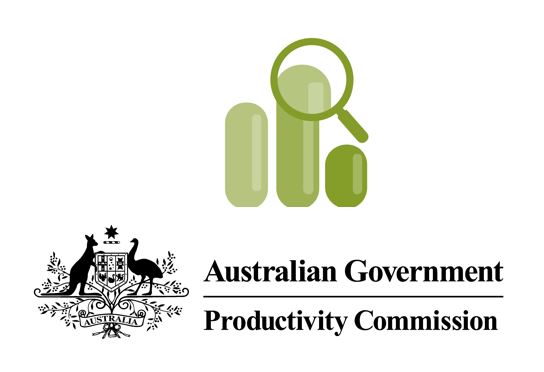The Productivity Commission’s Report on Government Services (RoGS) has a large section on Health. The sector is broken into public hospitals, primary and community health, ambulance services, and mental health management.
Total government expenditure across Australia in 2016-17 for health services was estimated to be over $96.7 billion in 2015-16, around 43.2 per cent of total government expenditure on services. The largest contributor was public hospitals ($61.4 billion), followed by primary and community health ($32.1 billion) and ambulance services ($3.2 billion, in 2016-17).
Expenditure for mental health management was $8.4 billion in 2015-16, but because much of this expenditure is already captured in the public hospital and primary community health expenditure it is not included in the health expenditure total to avoid double counting.
The RoGS Health section is available here.
Public hospitals
In 2015-16, Australia had 701 public hospitals. About two thirds (69 percent) had 50 or fewer beds, with these smaller hospitals representing only 14.0 percent of total available beds.
There were 60,957 available beds for admitted patients in public hospitals, equivalent to 2.6 beds per 1,000 people. The RoGS reports says the concept of an ‘available bed’ is becoming less important in the overall context of hospital activity, largely because of the increasing significance of same day hospitalisations and ‘hospital-in-the-home’ care.
There were approximately 6.3 million separations from public (non-psychiatric) hospitals in 2015-16, of which just over half were same day patients. Nationally, this translates into 246.9 separations per 1,000 people.
A key metric in the report is the proportion of patients in emergency departments who are attended to within various triage levels. All patients at level 1 (need for resuscitation) were seen immediately, with proportions declining with each level. NSW has the best result for wait times at level 2 (emergency), with 81 percent of patients seen within ten minutes.
Overall wait times in all jurisdictions except Western Australia and Queensland have improved over the last few years, with around 70 percent of patients Australia wide now spending less than four hours in emergency. Waiting times for elective surgery are also measured – NSW does worst.
Other metrics include accreditation to various standards, number of adverse events (infections, falls, etc.), patient satisfaction, readmission rates, and workforce sustainability (e.g. average age of nursing staff). There are also many cost metrics. One key metric – mortality rates in hospital – was not available.
Primary and community health
The major provider of primary healthcare in Australia is through general practice physicians, heavily subsidised through the Australian Government’s Medicare — mainly as fee‑for‑service payments via the Medicare Benefits Schedule (MBS). Additional funding is provided by the Department of Veterans Affairs and through initiatives such as the Practice Incentives Program (PIP) and Primary Health Networks (PHNs).
State and territory governments also provide some funding for such programs, mainly to influence the availability of GPs in rural and remote areas. The remainder comes mainly from insurance schemes and patient contributions. The Australian Government also funds the Pharmaceutical Benefits Scheme (PBS) – around 70 percent of prescriptions for PBS listed medicines attract a PBS subsidy.
This sector also includes government subsidised dental services, maternity and child health services, community health services, and a number of other health services such as subsidies for physiotherapy, psychology, occupational therapy, audiology, podiatry and osteopathy.
In 2015‑16, of the $32.1 billion government recurrent expenditure on primary and community health services, around three-quarters was funded by the Australian Government and one-quarter by state, territory and local governments.
The Australian Government spent $9.1 billion on general practice, another $9.1 billion through the PBS and RPBS on prescription medicines, and $704 million on funding health services for Aboriginal and Torres Strait Islanders.
GP services per person were significantly lower than the national average in Western Australia, the Northern Territory and the ACT. People deferring visits to the GP because of the costs was highest in Tasmania and the ACT.
The report looks at immunisation rates, public dentistry waiting times, cancer screening, GP accreditation, patient satisfaction, and a number of efficiency measures.
Ambulance services
Nationally in 2016-17 there were 3.5 million incidents resulting in 4.4 million ambulance service responses to attend to 3.3 million patients. Recurrent expenditure across Australia was approximately $3.2 billion, or $130 per person). There were 16,980 full time equivalent paid personnel, 6,575 volunteers and 3,178 community first responders in ambulance service organisations.
Ambulance response times were highest in the Northern Territory and Tasmania, and lowest in the ACT. Other metrics include pain management, ‘sentinel events’ (process deficiencies), patient satisfaction, workforce attrition, cardiac arrest survival rates, and expenditure per person.
Mental health management.
$8.5 billion was allocated to mental health services in 2015‑16, equivalent to $355 per person. State and territory governments made the largest contribution ($5.4 billion or 63.1 percent, which includes Australian Government funding under the NHRA), with Australian Government expenditure of $3.1 billion.
In 2015-16, 1.8 percent of the total population received state and territory government specialised mental health services and 9.6 per cent of the total population received MBS/DVA subsidised mental health services.
Comment below to have your say on this story.
If you have a news story or tip-off, get in touch at editorial@governmentnews.com.au.
Sign up to the Government News newsletter.




Leave a Reply